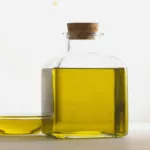There is something wonderful, even magical about spring; the cold starts to fade away, the days get longer, and new life appears in our gardens, fields and farms as plants break through and animals are born. It almost feels like a fresh, new beginning and adults as well as children get more energy.
Unfortunately for many, spring is also the bringer of often extreme discomfort in the form of hay fever. Pollen is an integrated part of the blossoming, and this is a trigger for both the nose, the eyes, and the throat to start complaining.
In this article we will go into depth with hay fever, how to minimize the effects of hay fever and what to do if nothing else works. If spring is not exactly your favourite season because of a struggle with hay fever, hopefully this article will help you.
What is hay fever?
Plants, like most living things, need to reproduce. For this to happen they create pollen, which is released by the plant. The pollen then floats through the air and allows plants to create new life. The pollen is either transported by animals, such as bees, which is vital to our ecosystems, but sadly a process in decline, or it is released into the air directly by the plants themselves.
It is this pollen that causes the irritation known as hay fever. Hay fever is actually an allergic reaction to the pollen, that enters into our nasal passages, which can cause runny and itchy eyes, a runny or very stuffy nose, and sometimes even a tickly cough.
Hay fever can strike anyone, and just because you haven’t been troubled by it before, that doesn’t necessarily mean that you are free of hay fever for good. One may not feel the hay fever one year, but the next year suddenly experience a brutal reaction. Though, there is no need to meet trouble halfway, just because you have hay fever once. It might go away next year.
With that being said, there is of course a bigger risk of getting hay fever, if you have experienced it before, but your reactions can change in degree and form. The reason for this is that the body is always developing. This means that your body might change, so you are no longer allergic to specific kinds of pollen – just as your food allergies might change throughout life. Also, the amount of pollen varies from year to year, which of course is a great influencing factor as well.
What can I do to stop hay fever?
You can try to keep hay fever at bay by preparing your home with a few simple steps. For example, you can try to keep windows and doors closed as often as possible to minimize the amount of pollen entering your home. You can also wipe down surfaces and soft furnishings with a damp cloth to collect the spores. If you have pets, particularly dogs, wandering outside, it’s also a good idea to wipe them down too, if it’s possible.
You can also buy nasal filters – small pieces of plastic that fit on your nose and filter some of the pollen spores out, before they reach the nasal passages and cause reaction.
It is also a good idea to identify and be aware of the specific types of pollen that trigger your reaction. For example, some people react to grass, while others are not bothered by this at all. That goes for all different types of pollen, and if you identify when your symptoms occur, you have a much better chance of sparring yourself the hay fever – at least partly. If for instance you are particularly allergic to grass, getting someone else to mow the lawn is a good place to start. If birch is your enemy, stay away from it if possible, and of course don’t jump into a flower garden, if flowers in general is your biggest problem.
But I’m still getting a reaction
Unfortunately, even with precautions it’s likely that you might still struggle with hay fever. If this is the case, there is a range of medications you can use to treat the symptoms. Many of the medications are available over the counter, but should the problems be of more enduring character, you ought to seek advice from your pharmacist or doctor.
Medications vary from tablets and syrups to medicated and preventative nasal sprays, such as nasaleze – a cellulose powder based product, which turns into a gel inside the nose, creating a physical barrier to help shield you from the airborne allergens, such as pollen, and thereby reducing the risk of a reaction.








